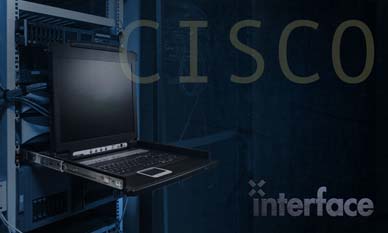
x
Course: Outline
Module 1: Cisco Unified Communications Manager Introduction
- Lesson 1: Describing the Role of Cisco Unified Communications Manager, Its Architecture, and Its Deployment and Redundancy Options
- Lesson 2: Performing Initial Cisco Unified Communications Manager Configuration
- Lesson 3: Deploying Endpoints and Users
- Lesson 4: Deploying IP Phone Services
Module 2: Dial Plan Introduction and Implementation of Single-Site On-Cluster Calling
- Lesson 1: Describing Dial Plan Components
- Lesson 2: Implementing Endpoint Addressing and Call Routing
- Lesson 3: Implementing Calling Privileges
- Lesson 4: Implementing Call Coverage in Cisco Unified Communications Manager
Module 3: Implementation of Single-Site Off-Cluster Calling
- Lesson 1: Analyzing Single-Site Off-Cluster Calling Requirements
- Lesson 2: Implementing PSTN Access Using MGCP Gateways
- Lesson 3: Describing Cisco IOS H.323 and SIP Gateways
- Lesson 4: Implementing PSTN Access Using H.323 Gateways
- Lesson 5: Describing the Cisco Unified Border Element
- Lesson 6: Using the Cisco Unified Border Element to Access the PSTN via a SIP Trunk
- Lesson 7: Using Cisco Unified Border Element for URI Dialing
- Lesson 8: Describing Dial Plan Interworking
Module 4: Media Resources
- Lesson 1: Describing Media Resources in Cisco Unified Communications Manager
- Lesson 2: Implementing Annunciators and MOH
- Lesson 3: Implementing MTPs
Module 5: Audio and Video Conferencing
- Lesson 1: Describing Conferencing Devices and Their Functions
- Lesson 2: Implementing Conference Bridges
- Lesson 3: Describing Cisco TelePresence MSE 8000
- Lesson 4: Implementing Cisco TelePresence Server
- Lesson 5: Implementing Cisco TelePresence Conductor
Module 6: Quality of Service
- Lesson 1: Analyzing Quality of Service Requirements
- Lesson 2: Describing QoS Components and their Functions
Labs:
- Hardware Lab 1: Configuring Cisco Unified Communications Manager Initial Settings
- Hardware Lab 2: Deploying Endpoints and Users
- Hardware Lab 3: Implementing Endpoint Addressing and Call Routing
- Hardware Lab 4: Implementing Calling Privileges
- Hardware Lab 5: Implementing Call Coverage
- Hardware Lab 6: Implementing PSTN Calling Using MGCP Gateways
- Hardware Lab 7: Implementing PSTN Calling Using H.323 Gateways
- Hardware Lab 8: Implementing PSTN Calling Using SIP Trunks Through Cisco Unified Border Element
- Hardware Lab 9: Using Cisco Unified Border Element for URI Dialing
- Hardware Lab 10: Implementing Annunciators and MOH
- Hardware Lab 11: Implementing Conference Bridges
- Hardware Lab 12: Implementing Cisco TelePresence Conductor
Audience
The primary target audiences for the course are:
- Network administrators and network engineers
- CCNP Collaboration candidates
Secondary audiences are:
- Systems engineers
Prerequisites
The knowledge and skills that a learner must have before attending this course are as follows:
- Working knowledge of fundamental terms and concepts of computer networking, including LANs, WANs, switching and routing
- Ability to configure and operate Cisco routers and switches and to enable VLANs and DHCP
- Basics of digital interfaces, PSTN, and VoIP
- Fundamental knowledge of converged voice and data networks
What You Will Learn
Upon Completing this course, students will be able to:
- Describe the role of Cisco Unified Communication Manager in a Cisco Collaboration Solution, including its functions, architecture, deployment, and redundancy options, and how to deploy endpoints, users, and Cisco IP Phone Services
- Describe the functions and purpose of a dial plan and explain how to implement on-cluster calling.
- Describe how to configure MGCP, H.323 and SIP gateways. The module also describes how to create a dial plan that supports inbound and outbound off-cluster calling for numbers and URIs.
- Describe the types of media resources that Cisco Unified Communications Manager supports, how to configure Cisco Unified Communications Manager server software-based media resources, and how to implement Cisco hardware-based media resources
- Describe how to implement audio and video conferencing devices that can be used with Cisco Unified Communications Manager, built-in Cisco Unified
- Communications Manager software audio bridge, Cisco IOS-based audio and video conferencing bridges, and Cisco TelePresence conferencing products including Cisco TelePresence MSE 8000, Cisco TelePresence Server, Cisco
- Telepresence MCU, and Cisco TelePresence MCU, and Cisco TelePresence Conductor.
- Provide an introduction to QoS with emphasis on the QoS components, often referred to as the QoS toolkit, that are used to provide services for various business applications
